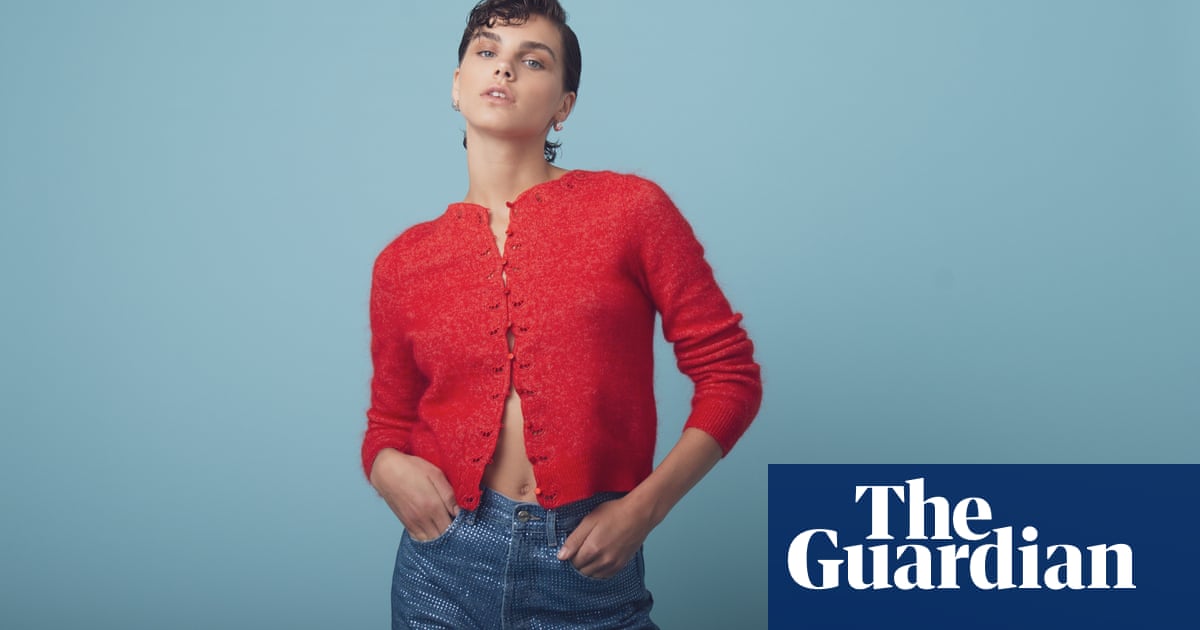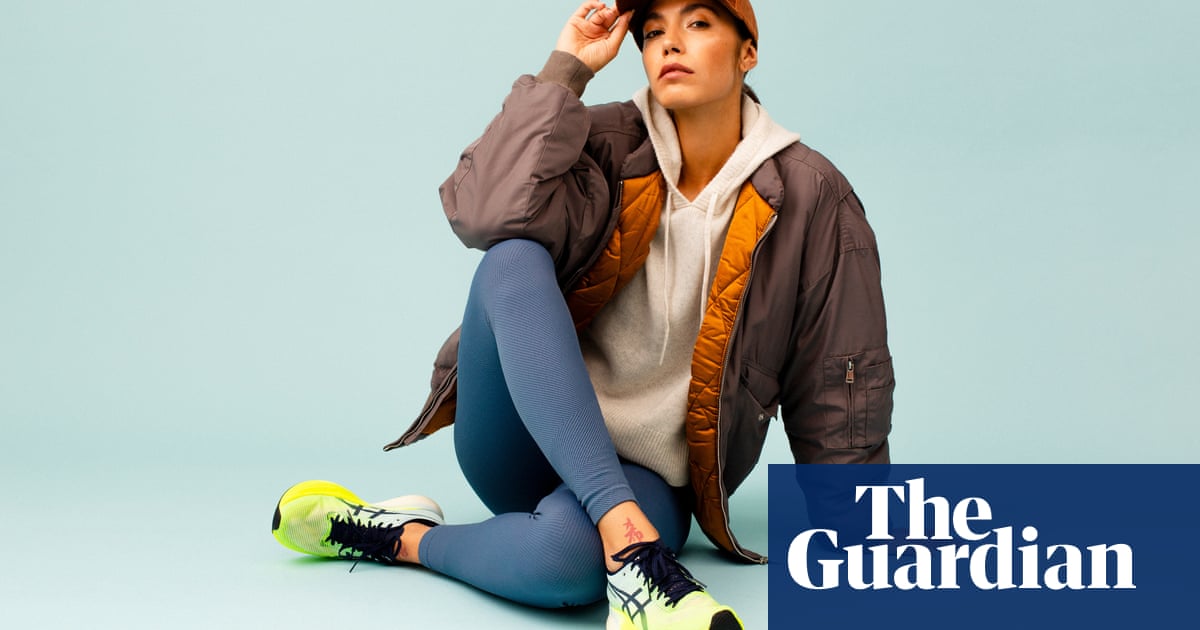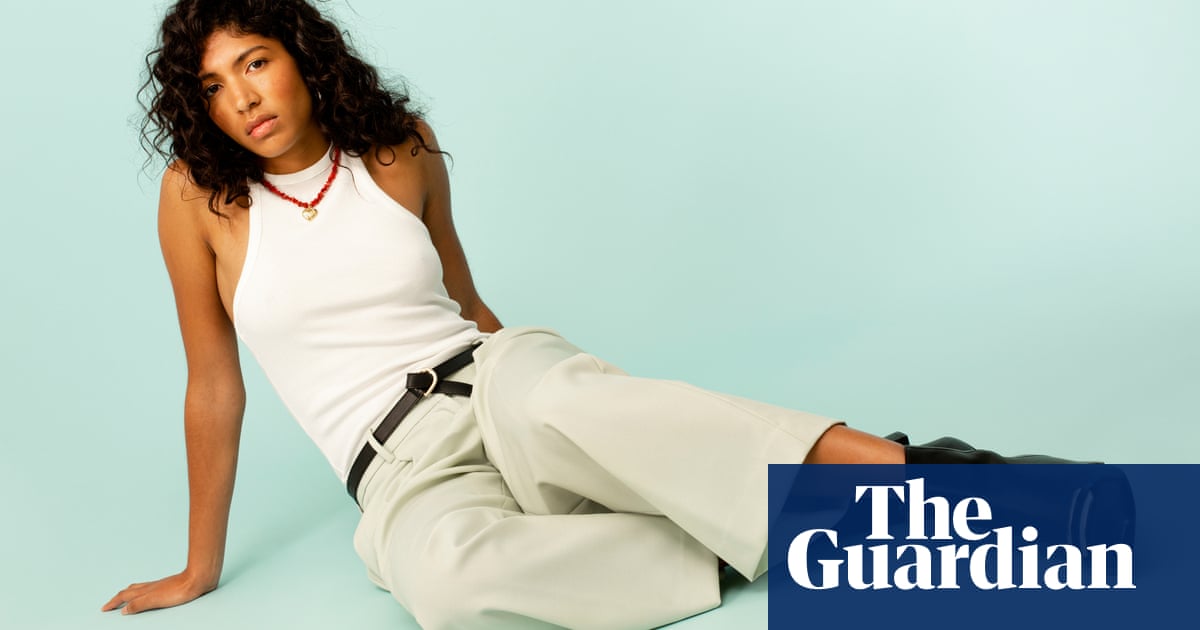
have spent the past few days at London fashion week, while really missing London fashion week. Watching dresses glide past on my laptop screen, wishing I was squished on to a hard concrete bench up close and personal with the real thing. Pining for salacious front row gossip, for haughty models switching their skirts like crocodile tails, for tantrums and tiaras and fashion week in all its mayhem and madness.
The first ever all-digital London fashion week has had gorgeous clothes – and even glorious shows. Simone Rocha took her Bridgerton-adjacent leather bodices and punk ballgowns in crunchy tulle to St John’s Church in Paddington, London, and filmed them on eight models over the course of a day, to accommodate scrupulous Covid-safe protocol. (Look closely and you can see how the light through the stained-glass windows changes from morning to afternoon.) Joely Richardson, her mother, Vanessa Redgrave, and her daughter, Daisy Bevan, were filmed on an iPhone reciting Shakespeare while wearing Roksanda Ilincic’s new collection at their Surrey home. Emilia Wickstead built a set in lush, forced rhubarb pink for her Hitchcock-chic models to walk through; Molly Goddard painted a sunny yellow backdrop in her Bethnal Green studio.
But none of these shows had an audience. And without the front row, in all its absurd but compelling pomp and pageantry, shows lack theatre. Without the rumours and secrets and off-stage feuds, the plot loses momentum. The influencers and celebrities overdressed to the nines at 9am, the ridiculous miniature canapés, the drama, the ego, the impractical shoes: these are jokes essential to the story. They are also the very things that help make fashion week brilliant.
Fashion designers, who you might have imagined would welcome the chance to showcase their talent without the off-stage action stealing the limelight, are universally desperate for a return to crowds and chaos. Stuck in their showrooms, designers rustle fabrics close to their laptop microphones so that I can hear what a coat would sound like if it were strutting past me. This is fashion week, and yet it is not. It is an uneasy sense of homesickness even while being at home, a pandemic sensation many of us experience in different ways. We walk through the subdued centres of our home towns and find ourselves missing the very streets we are standing in. And the fashion industry may not be springing back to life anytime soon. Clothing sales are the hardest-hit retail sector in the UK’s struggling economy, taking the brunt of January’s 8% downturn; Topshop, Debenhams and Miss Selfridge will not reopen their stores.
Perhaps the Paris shows, which begin next week, should follow the example of the Premier League and introduce artificial crowd noise. Maybe the clothes would come to life with the help of a soundtrack: the smack of airkisses and the clatter of stilettos. The genteel Centre Court hush when the lights go down and the unholy stampede for backstage when they come back up. On second thoughts, maybe this would just make me miss being there even more.
Rocha this week described the difference between real-life catwalks and digital ones as being like the difference between going to a gig and listening to a record. Just as much creativity and hard work goes into a record. More people can hear the record, without geographical and economic barriers that limit who can be in a room or a field at one time. But listening at home can never feel as powerful, or as urgent, as the collective experience of live music.
There is a moment in a great catwalk show when the clothes and the music and the way the models walk express something about that particular moment in time that is absolutely extraordinary. Christian Dior’s New Look skirts in Paris in 1947 were a peacetime pageant, a statement of faith in the renewal of Europe as a civilised culture. Marc Jacobs’ 1992 grunge show in New York, all sagging T-shirts and ripped knits, was a gently devastating denouncement of fashion’s cannibalisation by conspicuous consumption. These are moments when the synapses of everyone in the room fire in electric union, powering the circuitboard of collective experience. And they do not happen over Zoom.
There are many positives to be taken from fashion week’s digital sabbatical, during a year of shuttered catwalks. Fashion films have improved beyond all recognition; lazy, fragrance-advertisement whimsy has been replaced by proper stories and a directorial point of view. More importantly, the carbon footprint of a bloated industry globetrotting between fashion weeks all over the world has undergone a much-needed correction.
And the switch from an invite-only model to a digital one that can reach a wide and diverse audience is a leap forward for an industry too long mired in outdated elitism. “We have a whole new audience, of millions of people. That is incredible, and there’s no turning back from that,” Ian Griffiths, the British designer of Italian fashion house Max Mara, told me this week. “But there is a visceral response you get from a live audience that you can’t replicate online – and that is what I desperately miss.”
Fashion gets nostalgic when we feel that modern life is missing something – and what we are missing right now is people. Our lives were just better when there were people in them. Luckily, there’s another lesson to be taken from the trend cycle of fashion: if you wait long enough, what you are missing will come back into fashion again. I can’t wait to be there.












